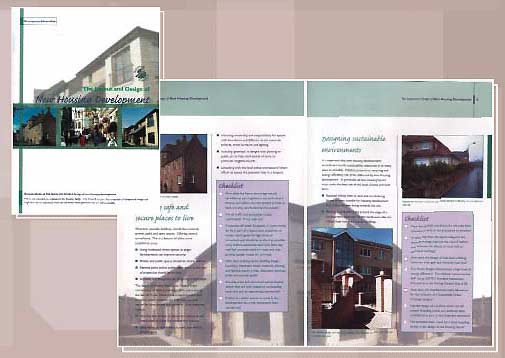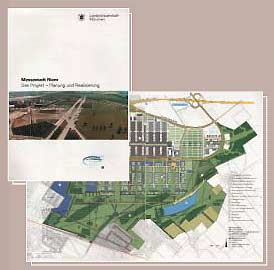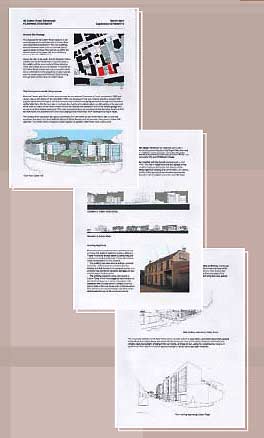Planning Advice Note 67: housing quality
Planning Advice Note (PAN) 67 explains how Designing Places should be applied to new housing.
This document is part of a collection
Planning Advice Note PAN 67 Housing Quality
Roles in the planning process
This section highlights the roles of local authorities, planning applicants, road engineers and other interests who play a part in the planning and design process.
1. Local authorities
In general, the less urban a place is, the less likely it is that the local authority planning department will have design skills; that the planners will be experienced in preparing urban design frameworks and development briefs, or conducting pre-application discussions and negotiating on design issues; or that design statements will be asked for. This was shown by the Urban Design Questionnaire conducted by the SSDP (Scottish Society for the Directors of Planning). Yet every development in a suburban and non-urban setting contributes in some small way - or fails to contribute - to making the neighbourhoods of tomorrow.
Getting the balance right in a particular situation is partly the job of the architect or urban designer. But the ground usually has to be prepared earlier by the local authorities. This can be achieved by using the urban design toolkit, the local authority will usually take the lead in preparing guidance. This will provide the basis for constructive discussions and negotiations with developers. But developers can share in the work, or help to pay for it, in circumstances where the council does not have the necessary skilled staff or resources. Their reward should be greater certainty in the planning process.
The local authority's development plan should set out a clear, robust planning policy framework which, in addition to much else, describes how the principles of design should shape development. The plan should also be a convincing statement of the council's commitment to high standards of housing design.
The local authority has to decide how best to use its limited resources. For example, development plans may identify those housing sites most in need of a development brief. How much work is involved in preparing guidance will depend on the scale and sensitivity of the area or site, and of any likely development - and of the resources available.
Residential Development Guide, West Lothian Council
Timing
The timing of the guidance is vitally important. Prepared too late, it will have no influence on what sort of housing landowners and prospective developers will be willing to build, especially if land has already been bought on the basis of different expectations. Councils should encourage landowners, developers and housing associations to prepare design guidance (in partnership with itself if possible) at the time they are beginning to think about how sites might be developed - with the incentive of a quicker and more certain planning process. Councils should be one step ahead in knowing for which areas and sites, guidance will be needed and, where appropriate, prepare (or commission) the guidance itself.
Informal guidance
Even when formal guidance is not being prepared, the local authority needs to think about what sort of informal guidance its officers are giving. It is not unusual for developers to receive different answers to questions asked of different officers in the same department, when seeking information about council policy relating to a particular site.
Development Advice Note: The Layout and design of new housing development, Stirling Council
2. Applicants
Applicants have a role to play when planning their developments and preparing documents, which form part of the toolkit, to accompany planning applications. They should base all development proposals on thorough appraisals of the local area and site.
Preparing master plans
Applicants can produce a master plan to explain how a site or a series of sites will be developed. It should describe how the proposal will be implemented, set out the phasing and timing of development. It will also set out the costs (subject to commercial confidentiality). The planning authority needs to know that the development's basic economic assumptions are soundly conceived, though it does not need to see the detailed development appraisal.
Good practice master planning for a major brownfield site, Munich-Riem, Bavaria
Preparing design statements
A design statement prepared by the developer can be an effective means of making the planning process quicker and more certain, and of raising standards of housing design. It is a document explaining the design principles, and how they have been developed in response to the site and its wider context. The statement will show how the housing will be designed to create successful homes in a successful neighbourhood.
Submitted with the planning application, the design statement will help the council to understand how the design has been developed from those principles. This can provide a clear basis for discussion and negotiation.
The statement will explain how the proposed development has been shaped by an appraisal of the site and the wider area, and how the proposal responds to local and national policy and guidance.
An example of a design statement, Calton Road, Edinburgh
3. Road engineers
The design of housing layouts is too often determined by the requirements of road engineers, and road layouts have often been designed by road engineers working in relative isolation. Road standards can limit the scope for creating successful residential environments. As a result, planners and architects have found themselves with little scope for achieving high standards of urban design.
It is all too easy for movement to seem an end in itself, shaping a development to the exclusion of others. Instead the housing layout should be the basis for discussing the design details of the roads. Issues such as street lighting and signage should also be considered as a means of achieving the housing design objectives.
By way of good practice, engineers, planners, urban designers and others should all work together in multi-disciplinary teams, each offering their own perspective and helping to come to a balanced view.

|
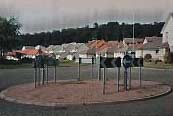
|
Cluttered traffic signs, Stirling |
Excessive signage, Fife |
Culs-de-sac
Perhaps the most basic question to ask of a housing development proposed for a suburban site is whether or not it should be a cul-de-sac. Culs-de-sac need to be used with care in housing layouts, as they can put pressure on the local network of streets without making any positive contribution to it.
Whether that impact is acceptable may depend on the cumulative impact of local culs-de-sac on the connected streets that lead to them, in terms both of the amount of traffic and the experience of pedestrians. The culs-de-sac may be served by excessively long distributor roads - often lined with blank walls or close-boarded fencing, and unattractive to anyone on foot - on which houses turn their backs.
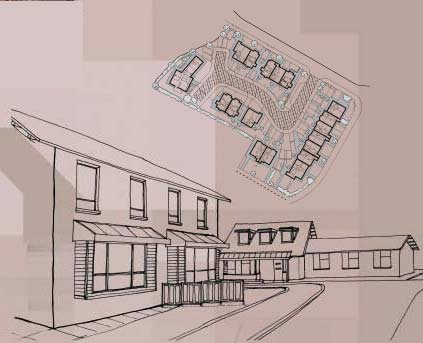
Well designed cul de sac, Pineview Phase 7, Pineview Housing Co-operative, Glasgow
Home zones
Similarly important issues about the basic housing layouts are raised by current discussions about home zones. The logic of home zones is simple. Traditional residential streets were once places where people on foot felt safe. Today, by contrast, the speed and volume of traffic makes living beside them less pleasant.
A home zone is a small area or part of a street that has been designed (or redesigned) to civilise it, without wholly excluding motorised traffic. In most cases vehicles can still drive along the street and through the area, but the design of the roadway and the features on it cause vehicles to drive very slowly - perhaps even so slowly and carefully as to make it safe for children to play in the street.
A home zone will almost certainly make a particular street, or part of a street, more pleasant for the people who live in it. But creating a zone in isolation may make some parts of the wider area less pleasant to live in, due to traffic that would have driven through the zone diverting to less obstructed routes. Street layouts for new housing must be designed from the start with traffic-calming in mind. The local authority should ensure that it is done in the context of a strategic approach to taming traffic over a wider area.
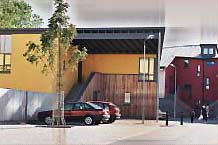
Low rise suburban housing with thoughtful integration of cars and buildings, Grangemouth, Falkirk
home zone is a small area or part of a street that has been designed (or redesigned) to civilise it
4. Councillors
Councillors have an important part to play in the planning of housing, setting out principles rather than becoming involved in design details. Officials should ensure that they are familiar with and committed to the council's design policies and to its design guidance. They should also visit schemes that the council has approved to see the built results. To help encourage best practice in design, Councils should enter projects in their area for housing awards schemes, such as the Saltire Awards.
Overall, councillors should take part in training courses to ensure that they have a basic knowledge of the principles of urban design, and that they keep their knowledge up to date.
5. Education, training and continuous professional development
Higher standards of housing design depend on the attitudes, knowledge, confidence and skills of everyone involved in the planning, design and development process. This includes councillors, planners and developers.
Some will need basic training in understanding design issues. Others need their knowledge to be brought - and kept - up to date, as a commitment to lifelong learning. Some need to acquire specific design skills. The process of monitoring what has been built, and the role of the planning process in shaping it, can itself be a good basis for training programmes.
Planning schools have an important role in providing training and continuous professional development.
6. The public
The public can be influential in improving the quality of housing design we expect and by insisting on thoughtful design and higher standards everywhere. Where opportunities arise, they can take part in preparing urban design guidance, discuss issues of planning and housing design with local councillors, encouraging them to insist on high standards.
They can also help to initiate village (and other local) design statements as a way of identifying the important features of the place's character, and suggest how they can be reflected in any new development. One way to help broaden experience and understanding of design is through organisations such as the Lighthouse, Scotland's centre for architecture and design.
Higher standards of housing design depend on the attitudes, knowledge, confidence and skills of everyone involved in the planning, design and development process
Contact
There is a problem
Thanks for your feedback

